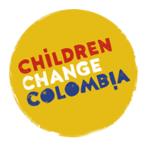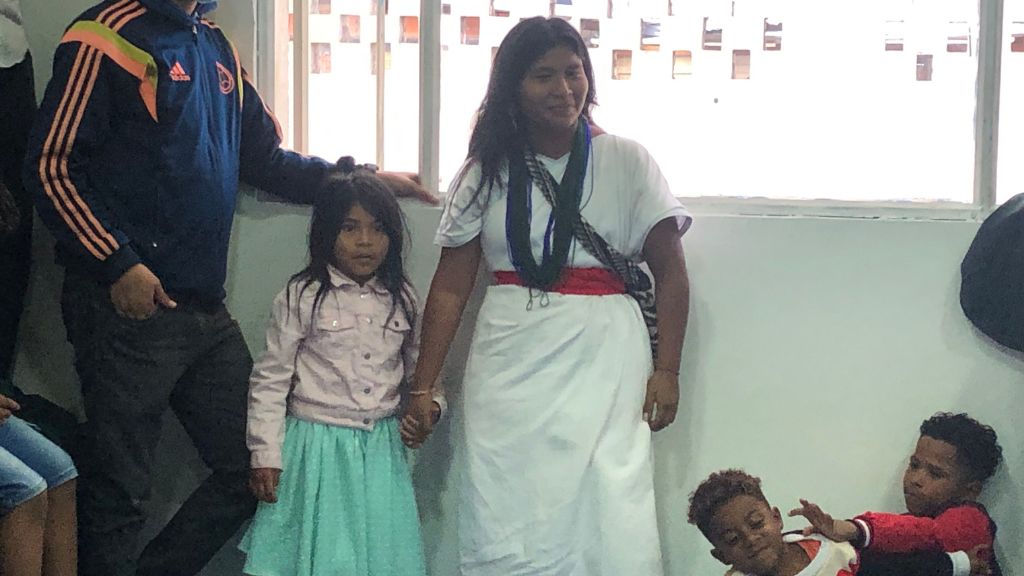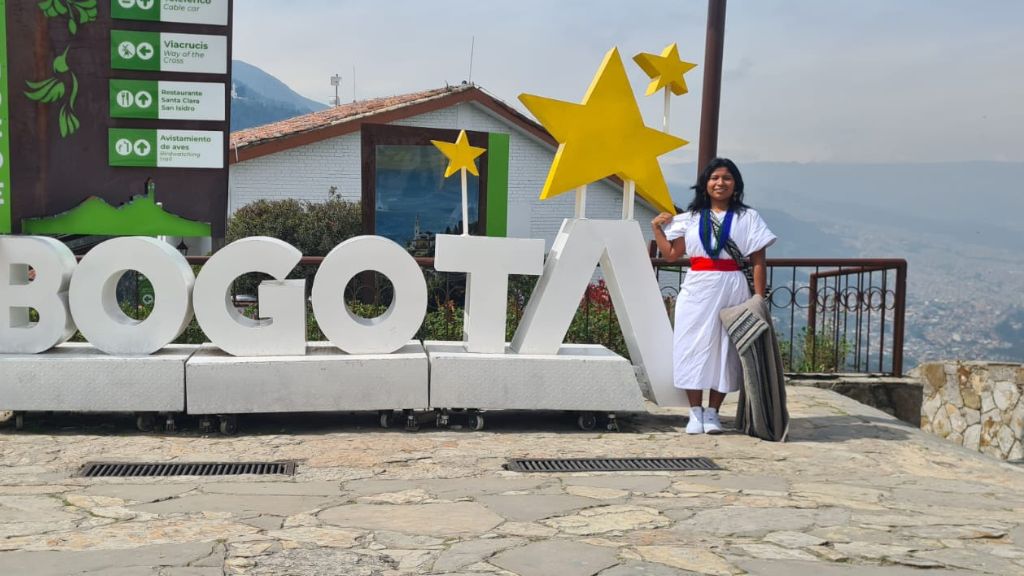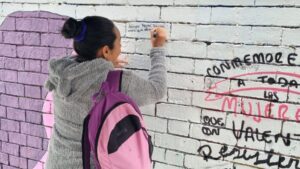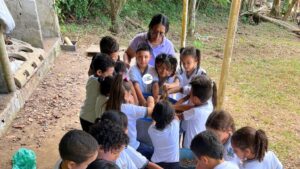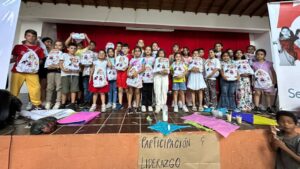Santa Fé, Bogotá
The reggaeton beat pulses through the room. Twenty-five children jump and dance, remarkably well-choreographed, considering their young age, between five and twelve. At the center of the half-circle, 17-year-old Dennis dances with them. She’s dressed in a long white dress with a wide red scarf around her waist. Layers of green and blue beaded necklaces around her neck. She has straight black hair and a mochila hangs across her shoulder. The kids around her are in colorful, synthetic cheap fabrics, tracksuits and printed dresses.
Dennis comes from the remote Wiwa Indigenous community in Minca, a small town nestled in the lush greenery of the Sierra Nevada de Santa Marta. It’s a region known for its biodiversity, unique ecosystems, and rich Indigenous heritage. But it’s also a place scarred by deep poverty, limited access to education, illegal mining, and the ever-present threat of armed groups -casting long shadows over the future of children and young people like Dennis across Santa Marta and Colombia’s rural Caribbean coast.
The children around Dennis are from here. They are kids of la Zona de Tolerancia, in the Santa Fé district of Bogotá- one of the city’s darkest corners, a place few enter voluntarily.

Just beyond the cheerful classroom walls lies a very different reality: dim doorways, street corners, and garage fronts crowded with teenagers carrying babies on their hips and glitter on their cheeks. Children in G-strings and cropped tops, women, and trans people with empty eyes, staring into nothing- or down at their phones, scrolling, waiting, selling the last thing they have left: their bodies. Among Venezuelan migrants, addicts, homeless people, and hardened drug gangs. They are all trapped in the zone where poverty and desperation collide. Here, anything goes. No one interferes. No one cares.
The music has stopped. Dennis is speaking. She talks about her home in Minca, about being the youngest of eleven siblings, growing up in poverty, and never imagining she would one day study agricultural management at Politécnico Universidad de Gran Colombia. The children are listening. Dennis knows what it means to grow up with very little- and with few chances of breaking free from the cycle of poverty
Dennis wipes away a tear from her cheek while speaking with Jonathan after the dancing class. He is the leader of the activity center in the zone. Here, the children have a safe space to learn, play, and breathe, while their parents search for ways to make it through another day. The contrast between the lush green of the Sierra Nevada and the potholed asphalt of Santa Fé is striking. Also for Dennis. But she recognizes the themes that Jonathan and the other outreach workers are taking to the kids about: their right to their own body, the right to say no, and that hope, and determination can help build a better future.
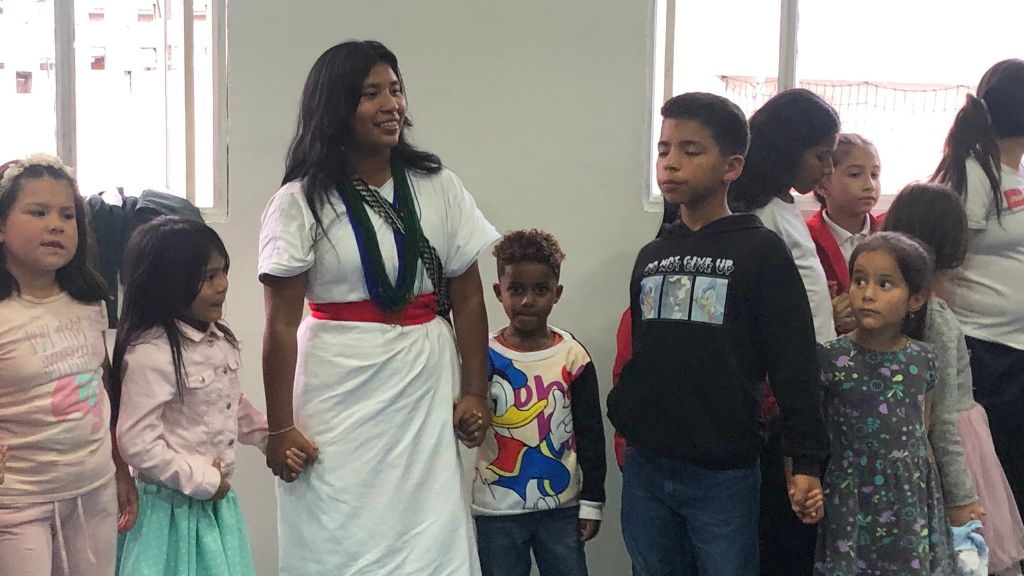
Maybe today, Dennis’ presence -her story- can plant a seed. A different future is possible. With the support of CCC’s educational program in Minca – and thank to her own determination and hard work- Dennis was able to change her path.
Child poverty in Colombia wears many faces. From the remote Sierra Nevada mountains to the depths of the Amazonian rainforest, and to the gritty streets of Bogotá. Across these vastly different landscapes, CCC supports children with programs that offer protection, education, and the chance for a better future.
Today, Dennis – a beneficiary of one CCC project in rural Minca – is visiting another CCC initiative in Bogotá’s Santa Fé district, bringing her story, strength, and hope to children growing up in an entirely different reality.
Colombia remains one of the most unequal countries in the world, with children bearing the brunt of that inequality. According to the OECD, it takes 11 generations to escape poverty in Colombia.
Written by: Sira Stoehramnn | Programmes Coordinator
